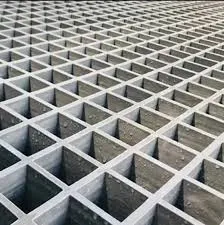
-
 Afrikaans
Afrikaans -
 Albanian
Albanian -
 Amharic
Amharic -
 Arabic
Arabic -
 Armenian
Armenian -
 Azerbaijani
Azerbaijani -
 Basque
Basque -
 Belarusian
Belarusian -
 Bengali
Bengali -
 Bosnian
Bosnian -
 Bulgarian
Bulgarian -
 Catalan
Catalan -
 Cebuano
Cebuano -
 China
China -
 China (Taiwan)
China (Taiwan) -
 Corsican
Corsican -
 Croatian
Croatian -
 Czech
Czech -
 Danish
Danish -
 Dutch
Dutch -
 English
English -
 Esperanto
Esperanto -
 Estonian
Estonian -
 Finnish
Finnish -
 French
French -
 Frisian
Frisian -
 Galician
Galician -
 Georgian
Georgian -
 German
German -
 Greek
Greek -
 Gujarati
Gujarati -
 Haitian Creole
Haitian Creole -
 hausa
hausa -
 hawaiian
hawaiian -
 Hebrew
Hebrew -
 Hindi
Hindi -
 Miao
Miao -
 Hungarian
Hungarian -
 Icelandic
Icelandic -
 igbo
igbo -
 Indonesian
Indonesian -
 irish
irish -
 Italian
Italian -
 Japanese
Japanese -
 Javanese
Javanese -
 Kannada
Kannada -
 kazakh
kazakh -
 Khmer
Khmer -
 Rwandese
Rwandese -
 Korean
Korean -
 Kurdish
Kurdish -
 Kyrgyz
Kyrgyz -
 Lao
Lao -
 Latin
Latin -
 Latvian
Latvian -
 Lithuanian
Lithuanian -
 Luxembourgish
Luxembourgish -
 Macedonian
Macedonian -
 Malgashi
Malgashi -
 Malay
Malay -
 Malayalam
Malayalam -
 Maltese
Maltese -
 Maori
Maori -
 Marathi
Marathi -
 Mongolian
Mongolian -
 Myanmar
Myanmar -
 Nepali
Nepali -
 Norwegian
Norwegian -
 Norwegian
Norwegian -
 Occitan
Occitan -
 Pashto
Pashto -
 Persian
Persian -
 Polish
Polish -
 Portuguese
Portuguese -
 Punjabi
Punjabi -
 Romanian
Romanian -
 Russian
Russian -
 Samoan
Samoan -
 Scottish Gaelic
Scottish Gaelic -
 Serbian
Serbian -
 Sesotho
Sesotho -
 Shona
Shona -
 Sindhi
Sindhi -
 Sinhala
Sinhala -
 Slovak
Slovak -
 Slovenian
Slovenian -
 Somali
Somali -
 Spanish
Spanish -
 Sundanese
Sundanese -
 Swahili
Swahili -
 Swedish
Swedish -
 Tagalog
Tagalog -
 Tajik
Tajik -
 Tamil
Tamil -
 Tatar
Tatar -
 Telugu
Telugu -
 Thai
Thai -
 Turkish
Turkish -
 Turkmen
Turkmen -
 Ukrainian
Ukrainian -
 Urdu
Urdu -
 Uighur
Uighur -
 Uzbek
Uzbek -
 Vietnamese
Vietnamese -
 Welsh
Welsh -
 Bantu
Bantu -
 Yiddish
Yiddish -
 Yoruba
Yoruba -
 Zulu
Zulu
cpvc frp pipe
Understanding CPVC FRP Pipe A Versatile Solution for Modern Piping Needs
In the realm of piping materials, CPVC (Chlorinated Polyvinyl Chloride) and FRP (Fiber Reinforced Plastic) have emerged as exceptional choices for various industrial applications. The combination of these two materials into CPVC FRP pipe provides an innovative solution that addresses the growing demand for durable, corrosion-resistant, and lightweight piping systems. This article will explore the characteristics, advantages, and applications of CPVC FRP pipes.
What is CPVC FRP Pipe?
CPVC FRP pipe is a composite piping solution that combines the properties of CPVC with the reinforcement of fiberglass. CPVC is known for its high resistance to temperature and pressure, making it ideal for transporting hot water and corrosive fluids. FRP, on the other hand, enhances strength and rigidity while maintaining a lightweight profile, making it easier to handle and install compared to traditional piping materials like metal.
Key Advantages
1. Corrosion Resistance One of the standout features of CPVC FRP pipes is their excellent resistance to corrosion. Unlike metal pipes that can rust or degrade when exposed to harsh chemicals, CPVC FRP pipes maintain their structural integrity over time, reducing the risk of leaks and failures.
2. Lightweight The combination of CPVC and fiberglass results in a pipe that is significantly lighter than its metal counterparts. This characteristic simplifies transportation and installation processes, leading to lower labor costs and reduced effort during construction.
cpvc frp pipe

3. High Temperature Tolerance CPVC can withstand temperatures up to 200°F (93°C), making it suitable for hot water applications. This thermal resistance, combined with the structural strength provided by FRP, makes CPVC FRP pipes reliable in various thermal environments.
4. Durability The robust nature of CPVC FRP pipes ensures they can withstand significant mechanical stress, including impacts and pressure fluctuations. This durability prolongs the lifespan of the piping system and minimizes maintenance needs.
5. Cost-Effectiveness While the initial investment in CPVC FRP pipes may be higher than traditional materials, the long-term savings achieved through reduced maintenance, replacement, and labor costs make them an economically sound choice.
Applications
CPVC FRP pipes find applications across multiple industries. They are widely used in chemical processing, water treatment facilities, and HVAC systems, where their resistance to corrosive substances is crucial. Additionally, they are used in aquaculture, food processing, and various industrial applications where hygiene and durability are paramount.
Conclusion
In conclusion, CPVC FRP pipes are an advanced solution that meets the demands of modern piping systems. With their unique properties of corrosion resistance, lightweight design, high temperature tolerance, and durability, they represent a significant advancement in piping technology. As industries continue to seek efficient and reliable piping solutions, the adoption of CPVC FRP pipes is expected to grow, paving the way for safer and longer-lasting infrastructures. Whether in a chemical plant or a water treatment facility, CPVC FRP pipes have proven themselves as a versatile and reliable choice for the future.









